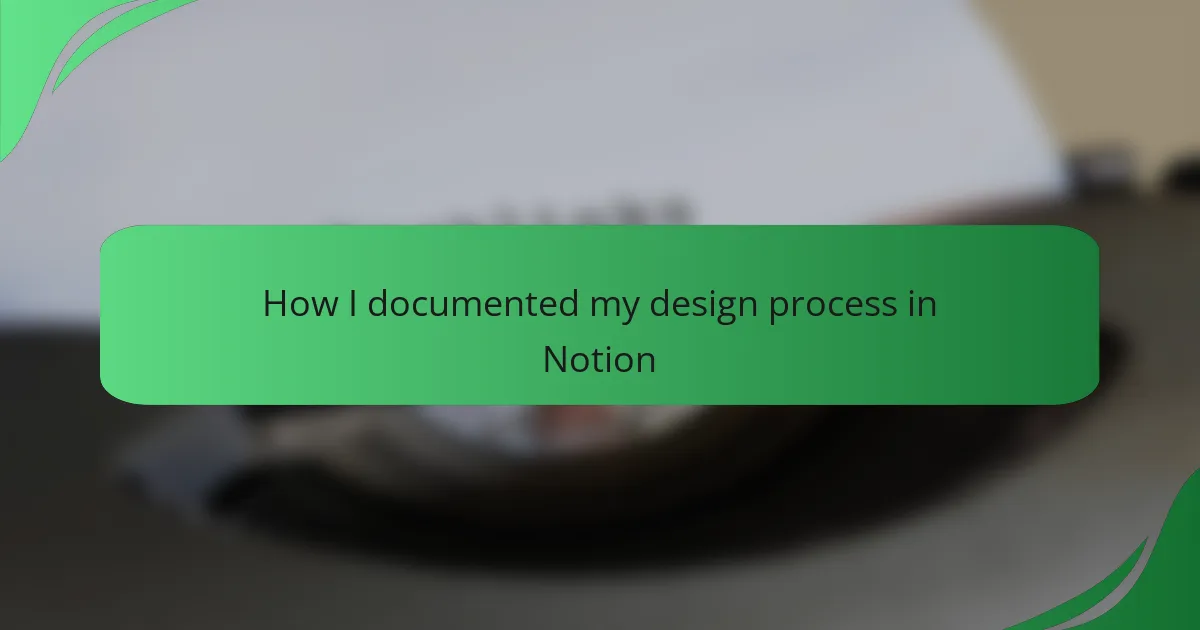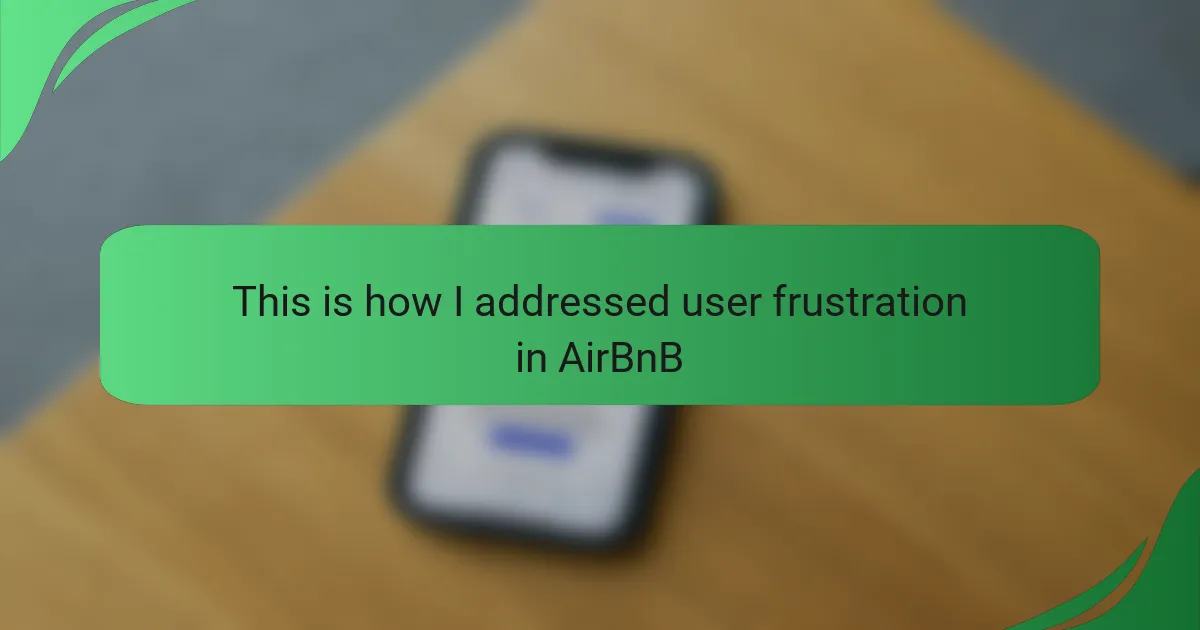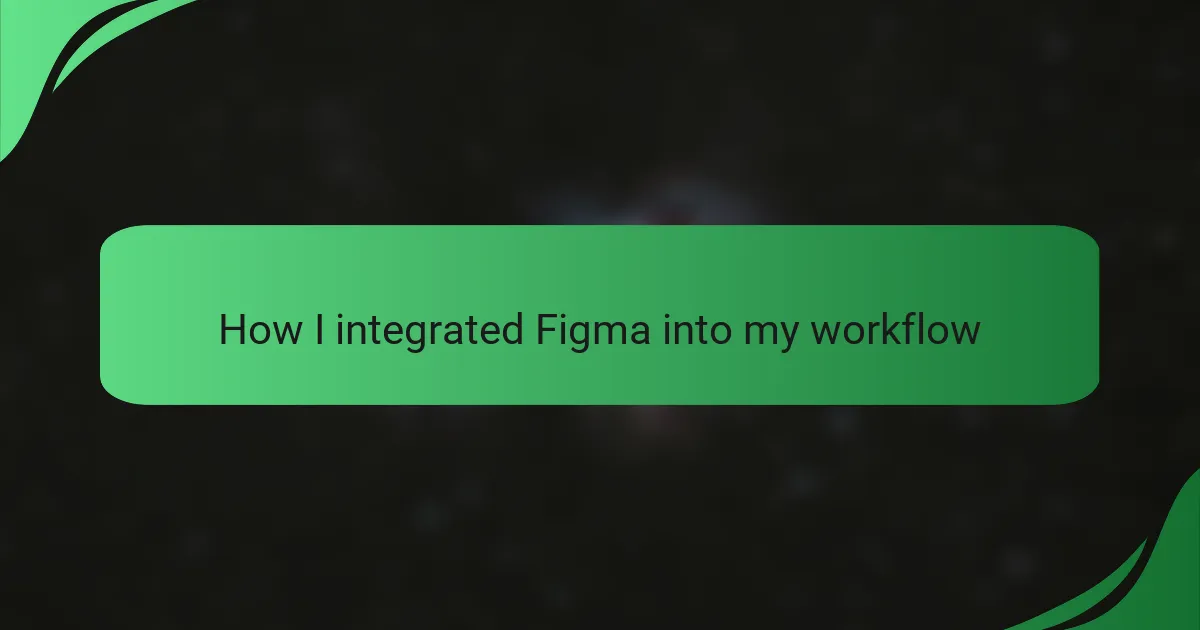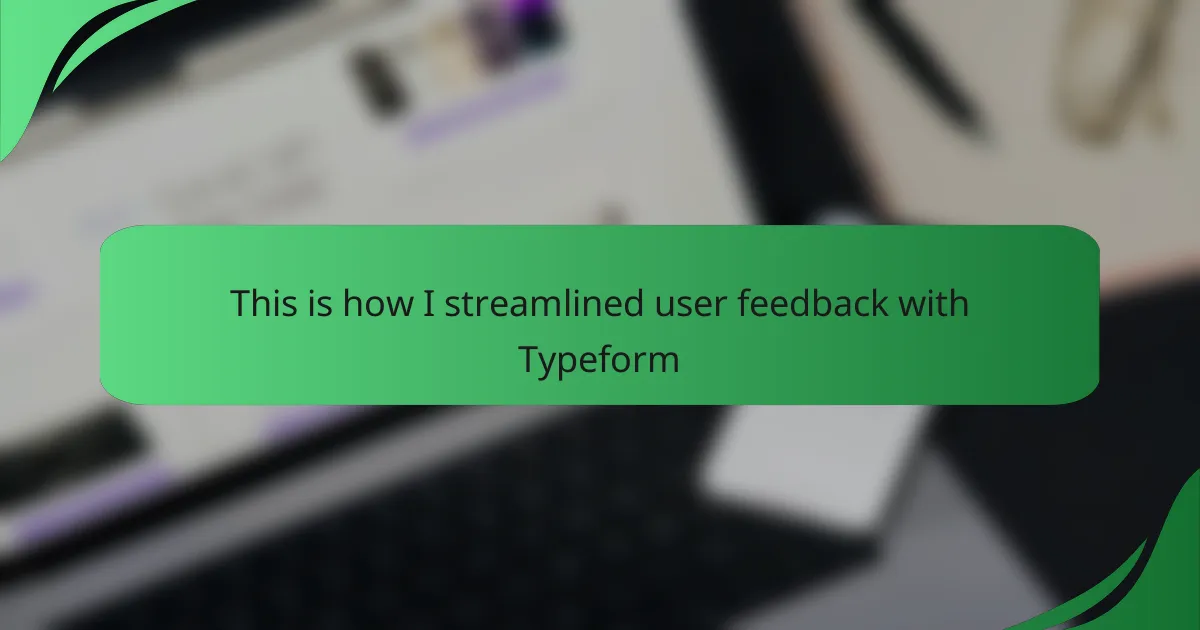Key takeaways
- Empathy in design is crucial for creating intuitive user experiences and effective interactions.
- Documentation enhances collaboration, clarity, and learning within design teams, streamlining workflows.
- Using tools like Notion can help organize design processes, track iterations, and visualize project development.
- Consistent updates and structured documentation improve overall design workflows and foster continuous improvement.
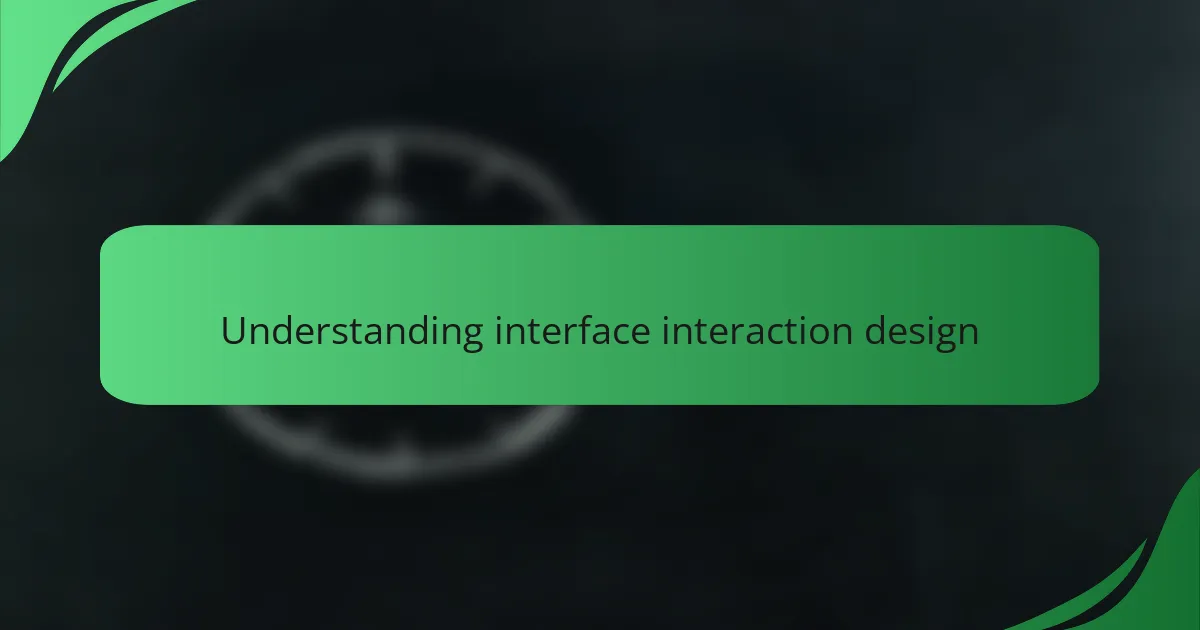
Understanding interface interaction design
Understanding interface interaction design goes beyond just creating visually appealing layouts. It’s about crafting a seamless experience that users can navigate intuitively. I remember my first project, where I struggled with user flow. I often found myself questioning whether my design choices actually resonated with users. This led me to realize the importance of empathy in design, ensuring that every interaction feels natural and engaging.
One of the most enlightening aspects of interface interaction design is the balance between functionality and aesthetics. When I started documenting my design process in Notion, I found it crucial to keep track of user feedback alongside design iterations. This allowed me to document not just the decisions made but also the rationale behind them.
- Empathy is key; understanding users’ needs shapes the design.
- Functionality must complement aesthetics for effective interaction.
- Continuous feedback is essential for refining design choices.
- Documenting decisions helps trace the evolution of the design process.
- Iteration is integral; every design should be a work in progress.
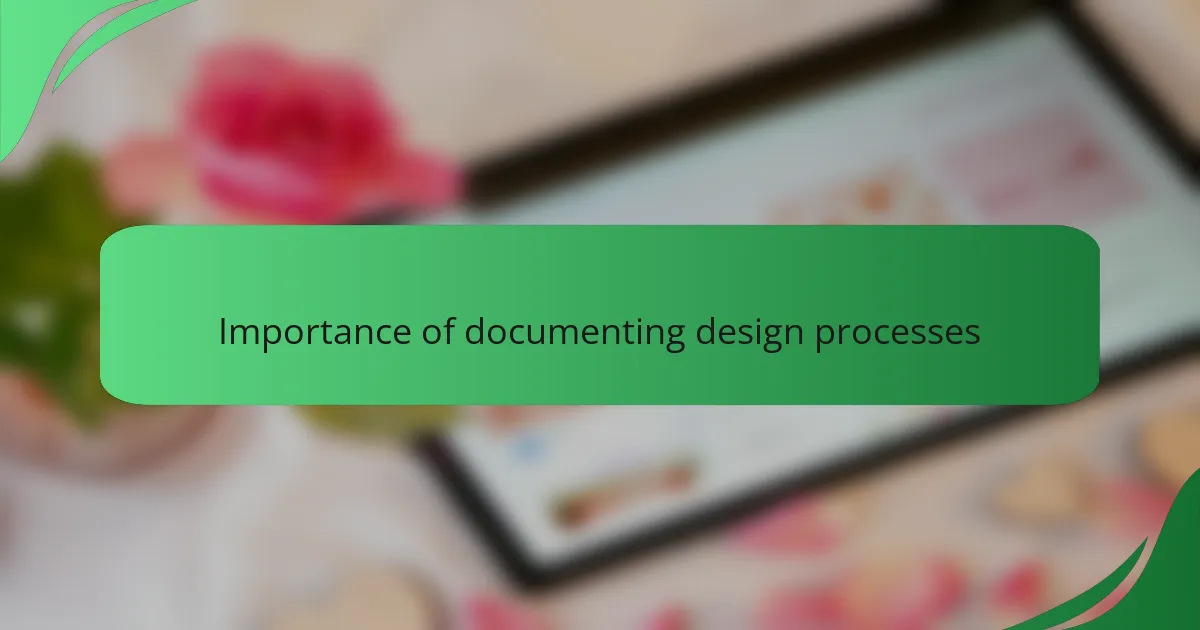
Importance of documenting design processes
Documenting design processes is crucial for several reasons. From my experience, it not only helps in tracking progress and decisions made, but it also serves as a reference for future projects. I remember a time when I faced challenges in recalling why certain design choices were made, and having documentation could have made that much easier.
Moreover, documentation facilitates better collaboration among team members. When everyone is on the same page, it minimizes misunderstandings and streamlines the design workflow. I’ve found that sharing my documented process nurtures a culture of transparency, significantly boosting team morale and efficiency.
Here’s a comparison table that illustrates the benefits of documenting design processes:
| Benefits | Impact |
|---|---|
| Improves Clarity | Design decisions are transparent and easily understandable. |
| Enhances Collaboration | Team members can work together more effectively. |
| Facilitates Learning | Future projects can build on past experiences and knowledge. |
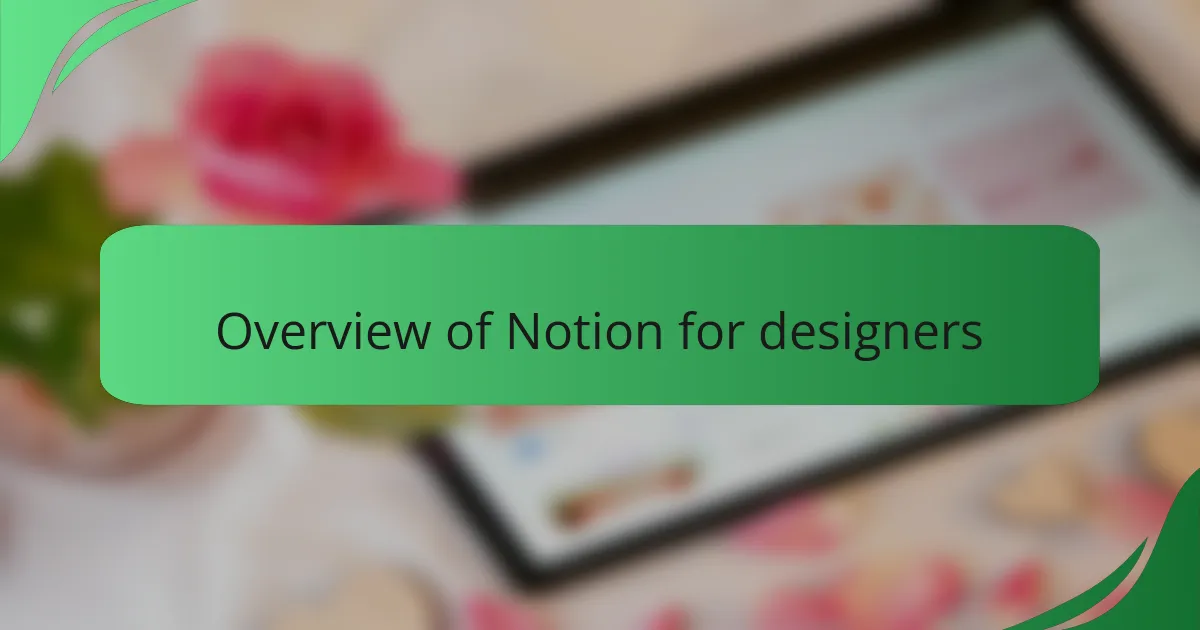
Overview of Notion for designers
Notion has become an indispensable tool for designers like myself, primarily because of its versatility and organization features. I remember feeling overwhelmed by scattered design notes and feedback, and Notion transformed that chaos into a streamlined space where I could manage everything in one place. With its ability to integrate databases, Kanban boards, and simple notes, I found it easier to track my design iterations alongside user insights, which made a significant difference in my workflow.
What I appreciate most about Notion is how it allows me to visualize my design process. When I create a new project page, I’m not just jotting down notes; I’m building a narrative of the journey—from initial sketches to final prototypes. This self-documentation not only aids in my design clarity but also leaves a digital footprint that may help others understand my decision-making. Have you ever struggled to remember why you chose a particular direction in your design? Having that contextual foundation in Notion helps me avoid those frustrating moments.
Additionally, the collaborative aspect of Notion cannot be overlooked. I often invite team members to view and contribute to my project pages, fostering an open dialogue about design choices. This collaborative spirit has often sparked new ideas and fresh perspectives, turning what could be solitary reflection into a collective brainstorming session. Wouldn’t it be great if every stakeholder felt equally invested in the design process? With Notion, that possibility doesn’t just seem ideal; it becomes reality.
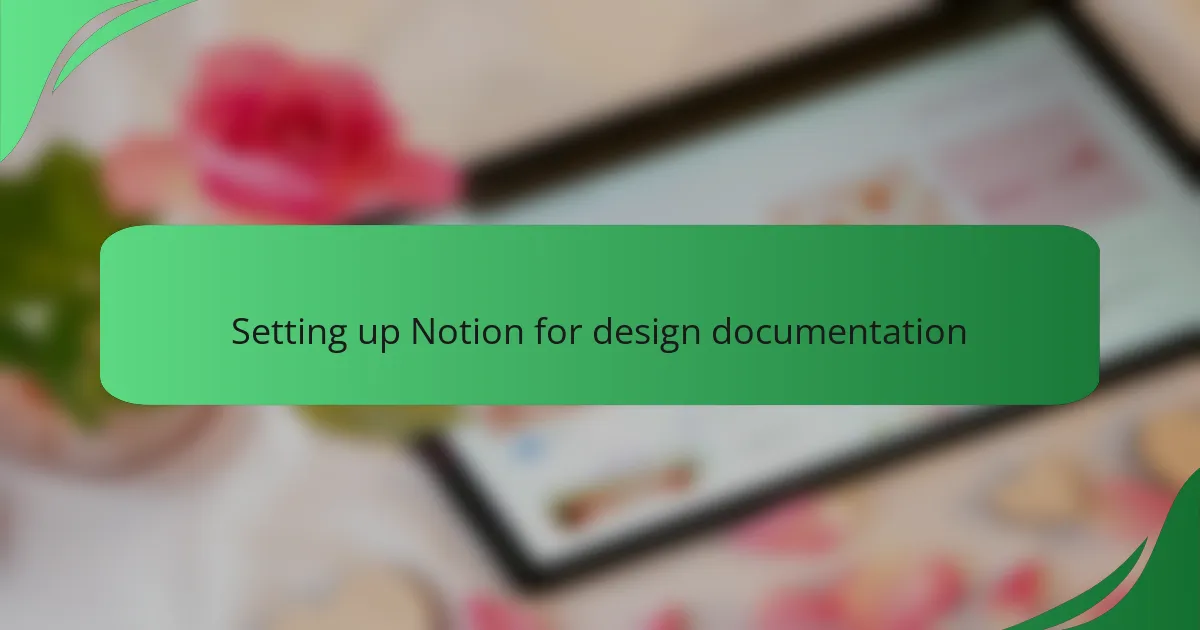
Setting up Notion for design documentation
When I first started using Notion for documenting my design process, I was immediately struck by its flexibility. Setting up my workspace required a bit of experimentation, but it was an enjoyable journey. I recall the thrill of organizing my thoughts and ideas visually, which made every stage of the design process feel intentional and coherent.
To effectively set up Notion for design documentation, I focused on creating distinct sections tailored to various phases of my projects:
- Project Overview: I included a brief description and goals for each design project.
- Research & Insights: This section captures gathered information and inspiration, which keeps me grounded.
- Wireframes and Prototypes: I established a gallery format to showcase work-in-progress visuals.
- Design Decisions: Documenting rationales helps clarify my choices for future reference.
- Feedback Log: I maintain a space for notes and critiques from peers, fostering an environment of continuous improvement.
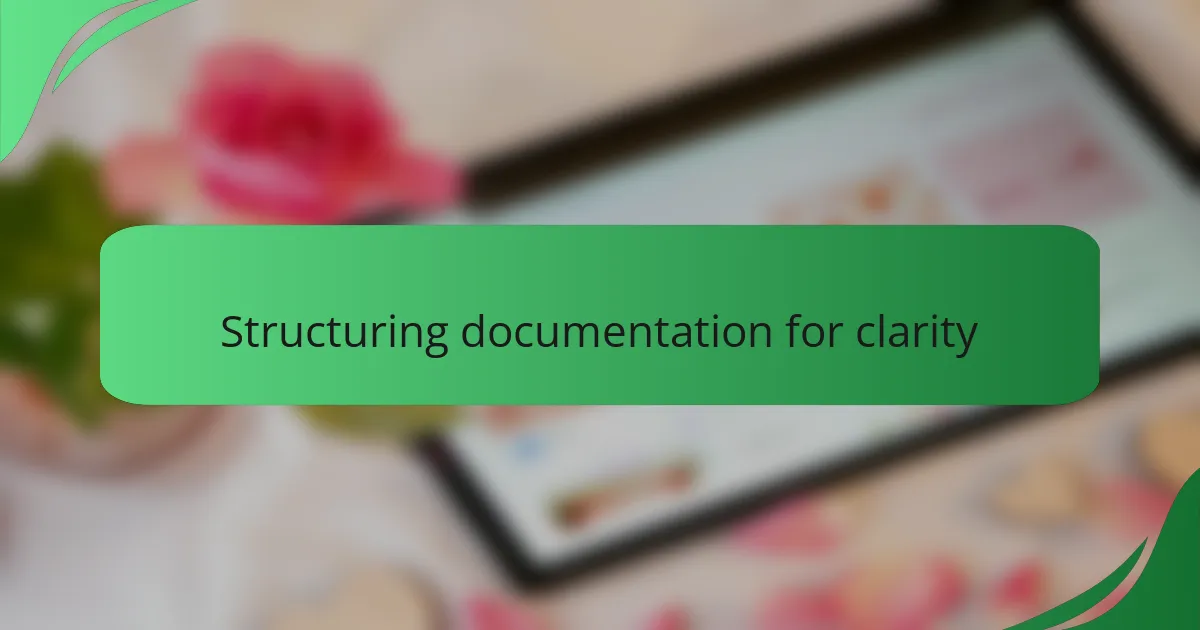
Structuring documentation for clarity
When I started documenting my design process in Notion, one of the first things I realized was the importance of structuring my documentation clearly. It felt overwhelming at first, but organizing my notes into distinct sections helped me see the bigger picture. I created a clear hierarchy, using headings and subheadings that reflected each stage of my project, which made it easier not only for me but also for anyone who might view my work later.
As I continued to refine my documentation, I found that bullet points were a game-changer, allowing me to distill complex ideas into digestible pieces. This streamlined format reminded me of creating wireframes; simplicity is key to clarity. Here are some tips I learned along the way:
- Use clear, descriptive headings for each section.
- Create separate pages for each stage of the design process, such as Research, Ideation, and Prototyping.
- Include visual aids like screenshots and sketches to supplement your text.
- Maintain a consistent layout so that readers can navigate easily.
- Add tags and links to related pages for quick access to relevant content.
This structured approach not only improved my documentation but also enhanced my overall design workflow.
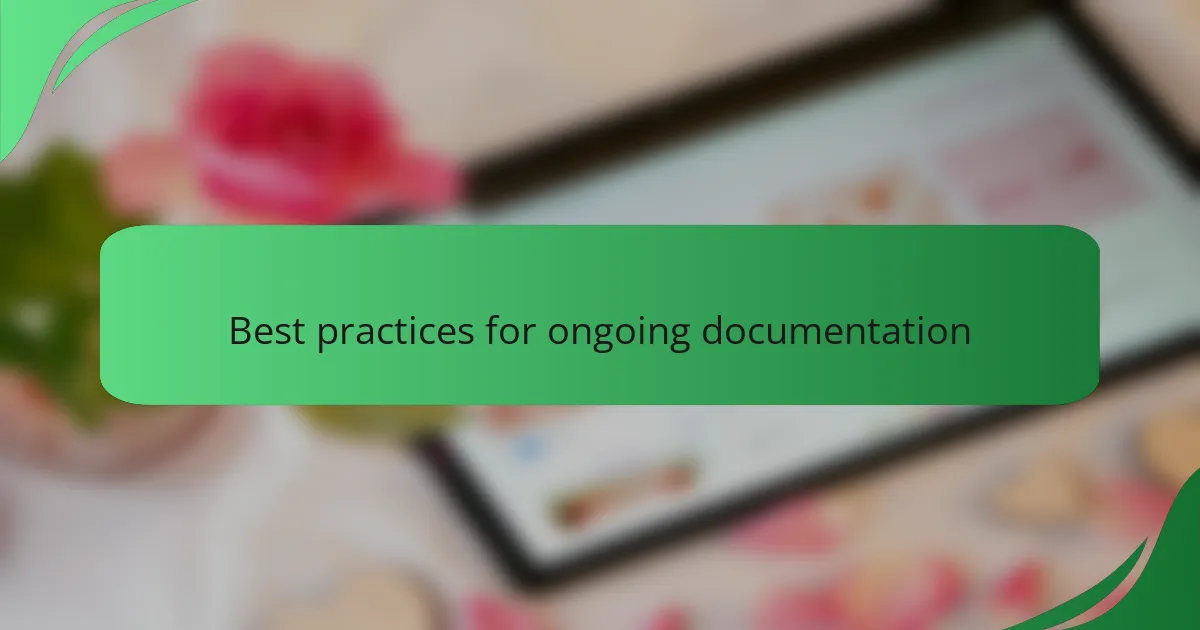
Best practices for ongoing documentation
When it comes to ongoing documentation, consistency is key. I’ve found that regular updates help keep my design process fresh in my mind, not to mention useful for future reference. Setting aside time each week to review and reflect on my notes in Notion has not only improved my documentation quality but also heightened my overall design awareness.
It’s also crucial to keep your documentation visually organized. Using headers, bullet points, and color-coded tags can transform a cluttered page into a coherent narrative. I remember the feeling of frustration when I couldn’t find key details from past projects, which inspired me to develop a more structured approach. Now, I approach my design documentation with a sense of pride, knowing it’s both comprehensive and easy to navigate.
Lastly, inviting feedback on your documentation can provide invaluable insights. Sharing my Notion pages with colleagues has opened the door to fresh perspectives and ideas, enriching my design process. For instance, their suggestions often lead to revisiting concepts I initially overlooked, further enhancing the depth of my work.
| Best Practice | Description |
|---|---|
| Consistency | Update documentation regularly to reinforce learning and maintain awareness of your design process. |
| Organization | Use headings, bullet points, and color coding to keep documentation visually appealing and easy to navigate. |
| Feedback | Share documentation with peers to gain new insights and improve your design process. |
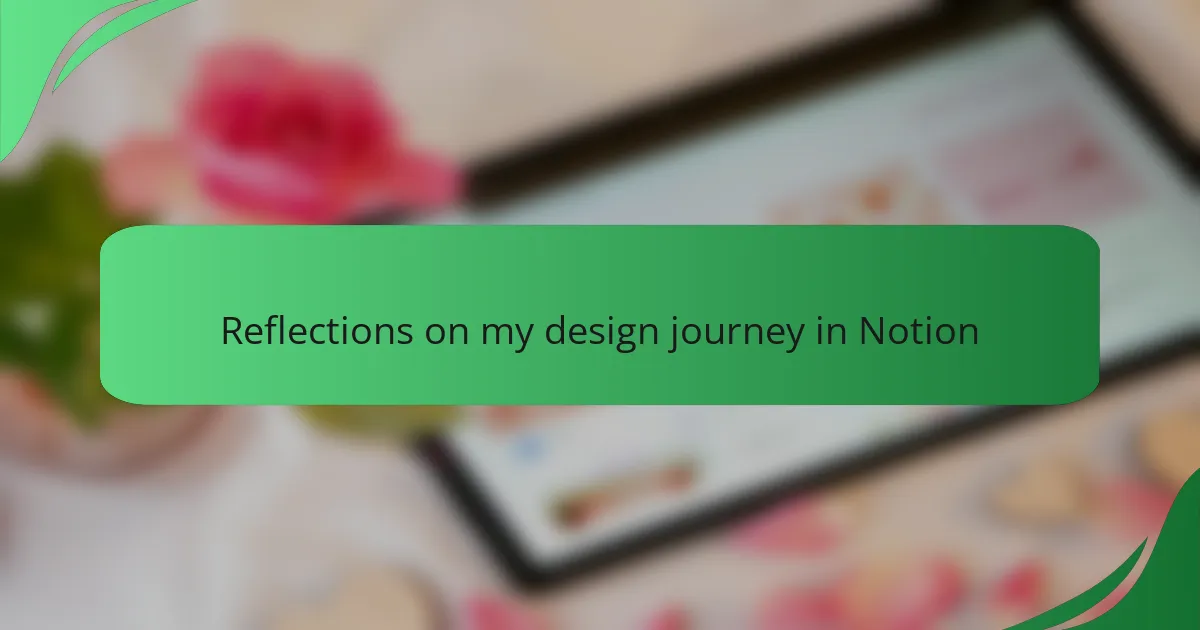
Reflections on my design journey in Notion
As I navigated my design journey in Notion, I found myself reflecting deeply on each project. I often recalled the late nights spent perfecting interfaces and jotting down ideas, realizing that this platform not only documented my work but captured my growth. Notion became a canvas for my creativity, allowing me to visually track my evolution as a designer.
Looking back, I cherish a few key insights from my experience:
- Establishing a clear structure helped me stay organized throughout my projects.
- Using templates for design reviews made it easier to maintain consistency in my reflections.
- I discovered that integrating feedback directly into my documentation enriched my design process.
- The visual elements I incorporated allowed me to express my personality and design style.
- Regularly revisiting my past entries reinforced my learning journey and motivated me to push my boundaries further.
